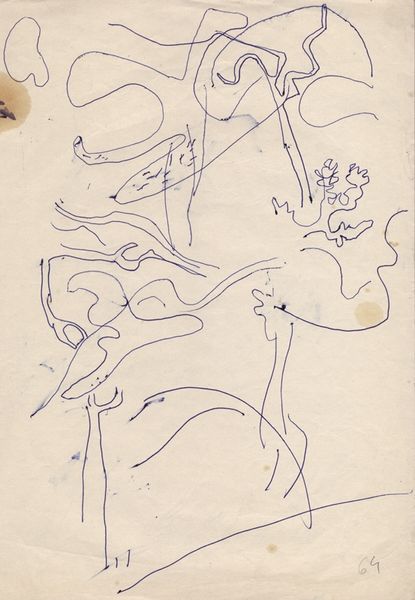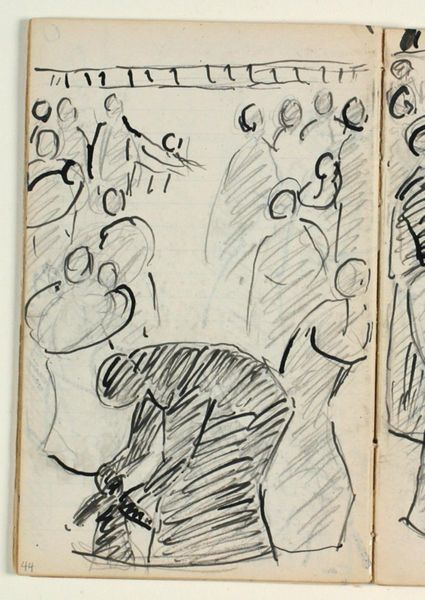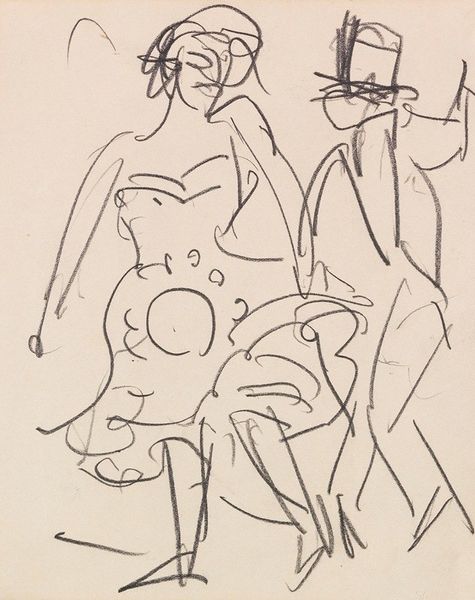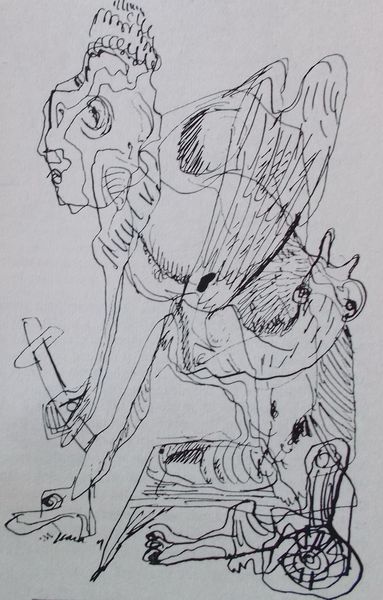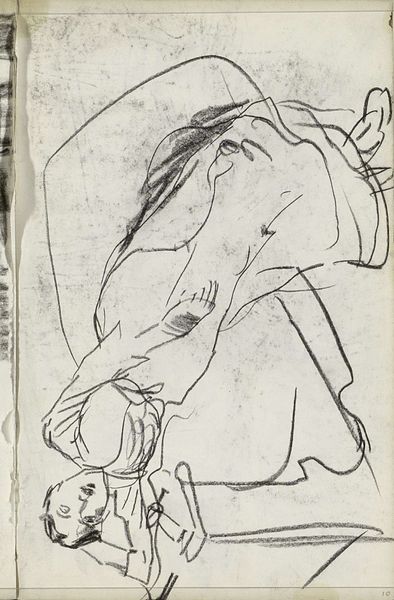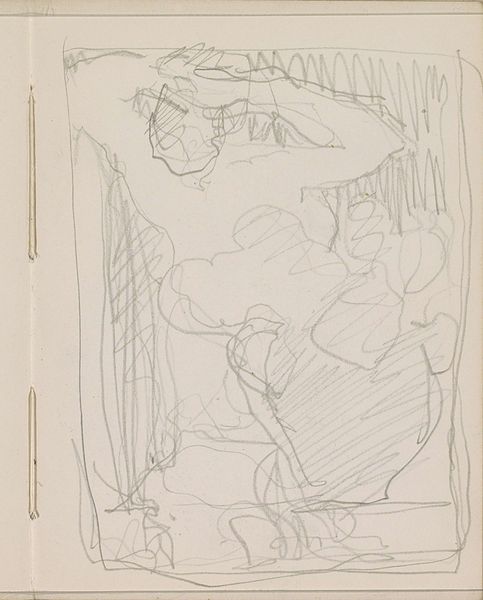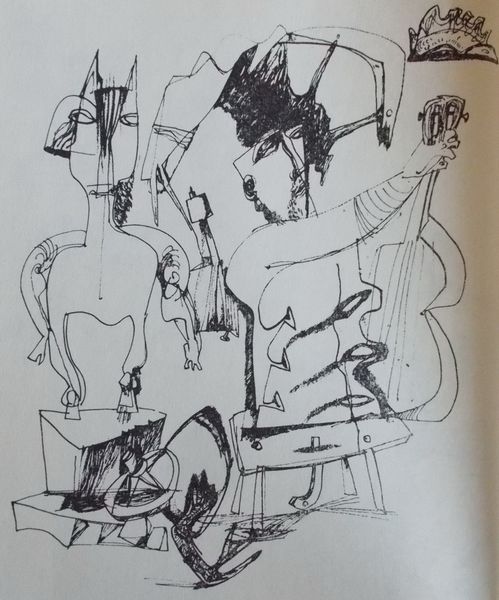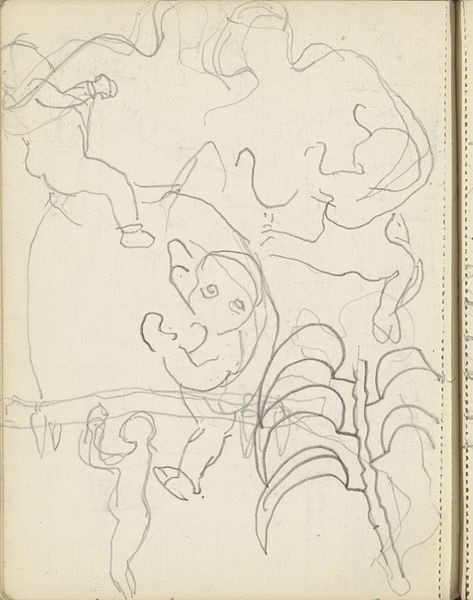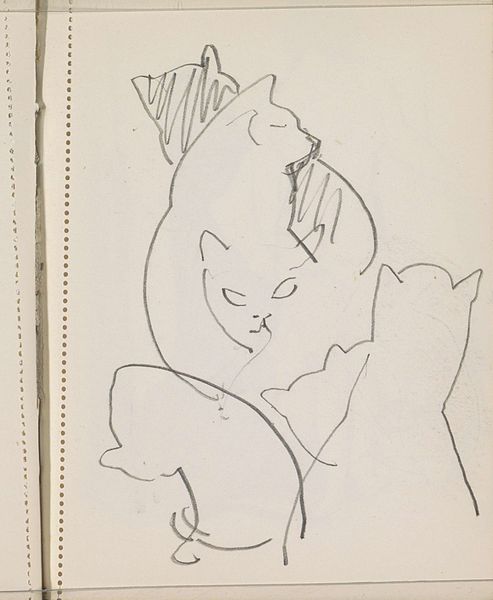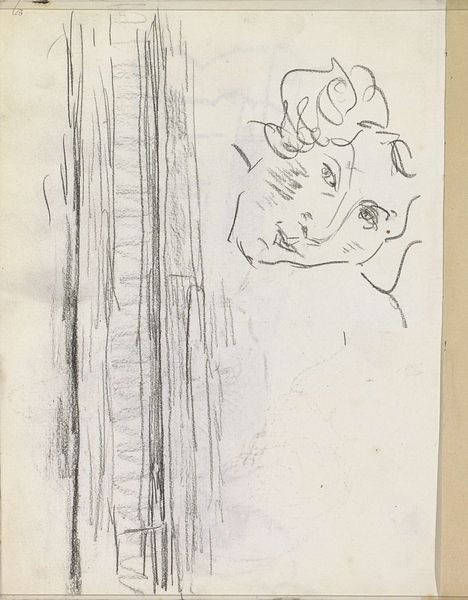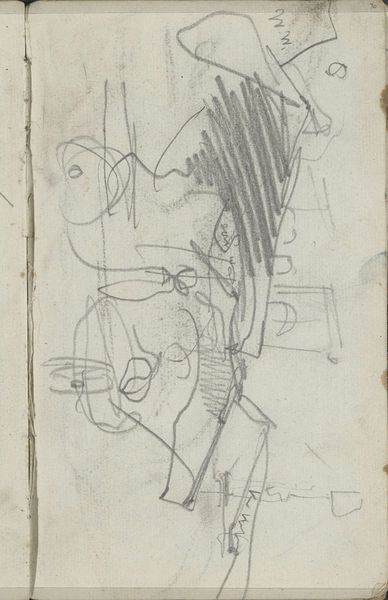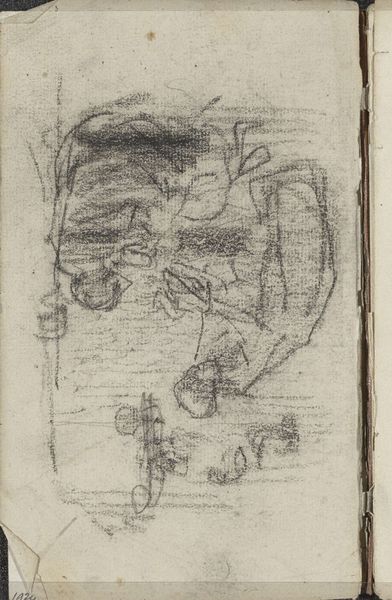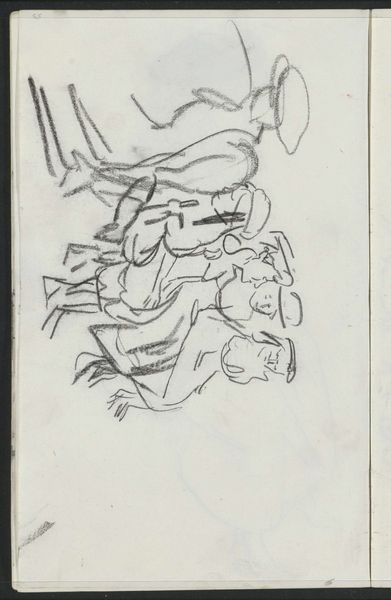
drawing, pen
#
drawing
#
figuration
#
line
#
pen
#
genre-painting
Copyright: Vasile Kazar,Fair Use
Curator: Let's turn our attention to Vasile Kazar's drawing, "Fiddlers at Wedding," created in 1968. The medium appears to be pen on paper. My initial impression is one of kinetic energy, captured through a masterful use of line. The composition feels very dynamic, as though we are witnessing a fleeting moment. Editor: Fleeting is right. It almost feels dreamlike, a half-remembered celebration. I'm drawn to the recurring imagery of music and drink – classic symbols of revelry and togetherness. The instruments become extensions of the musicians themselves, all caught in the celebratory chaos of the wedding. Curator: Indeed, Kazar employs line not merely to define forms but to evoke the auditory and tactile qualities of the scene. Note the variation in line weight. Thicker strokes define the primary figures, while lighter, almost ethereal lines suggest movement and the intangible aspects of music and atmosphere. There's a real structural sophistication here in how the artist layers the elements. Editor: I'd agree. And observe the specific icons associated with traditional wedding feasts: the bottles, the cups, and the nearly indistinguishable characters seemingly caught up in music and celebration. These are deep, psychologically charged motifs, going all the way back to classical depictions of Bacchus and festivals. Curator: Absolutely. We can view the repetitive, rhythmic nature of the lines themselves as a formal echo of the musical performances, thereby the drawing becomes, essentially, an embodiment of sound. The artist also is manipulating negative space. Editor: Speaking of rhythm, notice how the hats of the wedding guests seem to denote class or role. There's something almost comical, a bit grotesque even, in the exaggeration of these types— perhaps poking fun at the rituals of marriage itself and broader societal celebrations? Curator: That grotesque element could very well be at play, complicating any purely celebratory reading. What fascinates me is how such simple materials yield such complex visual structures. Editor: It does leave you thinking about what traditions we keep alive, generation after generation, and why they matter. The symbols may change, but our fundamental needs to come together in ritual endure. Curator: A superb point. This work is proof that strong art doesn't need excess material; the drawing is quite distilled. It merely requires profound understanding of structure and form to engage us.
Comments
No comments
Be the first to comment and join the conversation on the ultimate creative platform.
